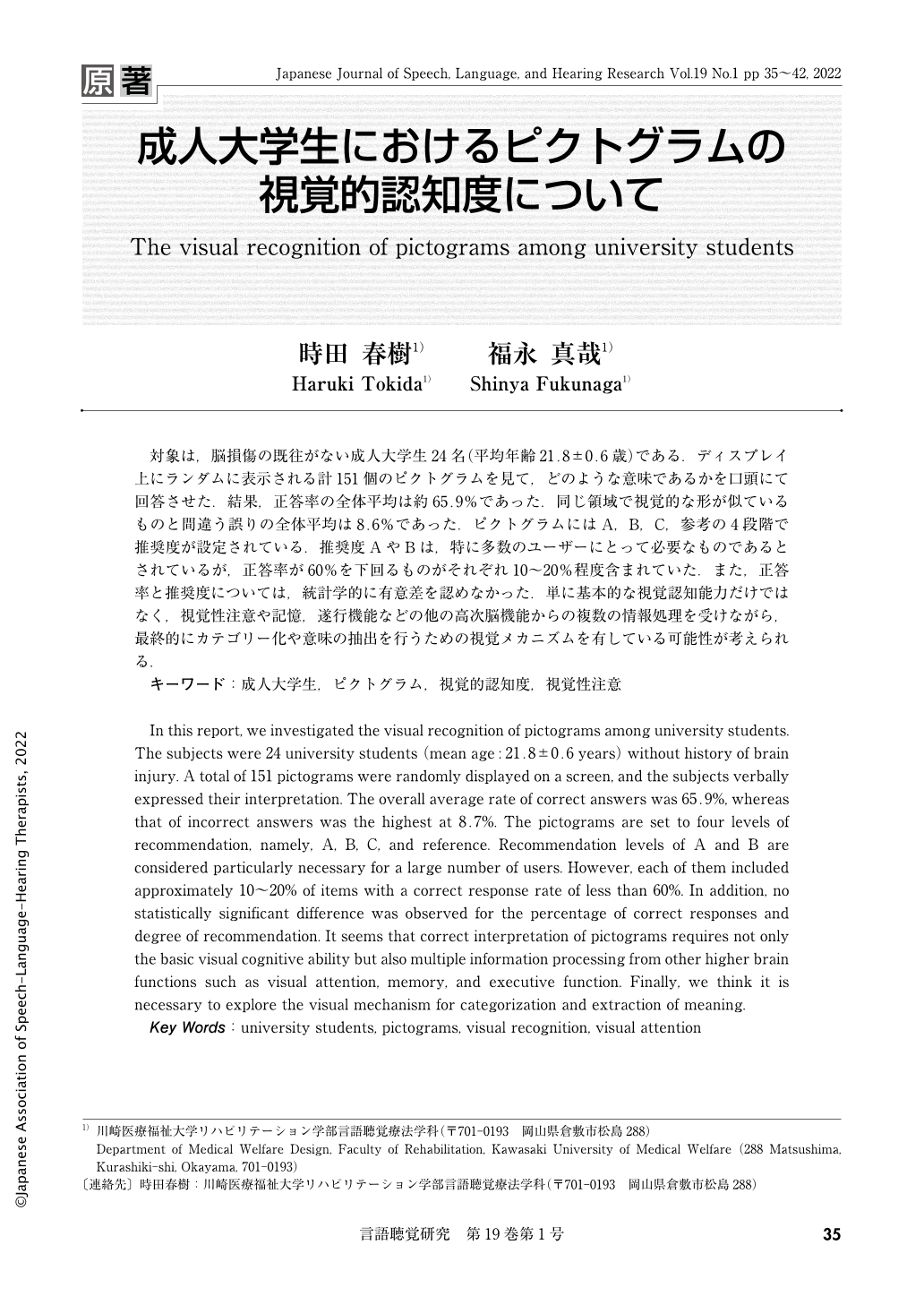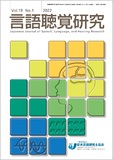Japanese
English
- 有料閲覧
- Abstract 文献概要
- 1ページ目 Look Inside
- 参考文献 Reference
対象は,脳損傷の既往がない成人大学生24名(平均年齢21.8±0.6歳)である.ディスプレイ上にランダムに表示される計151個のピクトグラムを見て,どのような意味であるかを口頭にて回答させた.結果,正答率の全体平均は約65.9%であった.同じ領域で視覚的な形が似ているものと間違う誤りの全体平均は8.6%であった.ピクトグラムにはA,B,C,参考の4段階で推奨度が設定されている.推奨度AやBは,特に多数のユーザーにとって必要なものであるとされているが,正答率が60%を下回るものがそれぞれ10〜20%程度含まれていた.また,正答率と推奨度については,統計学的に有意差を認めなかった.単に基本的な視覚認知能力だけではなく,視覚性注意や記憶,遂行機能などの他の高次脳機能からの複数の情報処理を受けながら,最終的にカテゴリー化や意味の抽出を行うための視覚メカニズムを有している可能性が考えられる.
In this report, we investigated the visual recognition of pictograms among university students. The subjects were 24 university students (mean age:21.8±0.6 years) without history of brain injury. A total of 151 pictograms were randomly displayed on a screen, and the subjects verbally expressed their interpretation. The overall average rate of correct answers was 65.9%, whereas that of incorrect answers was the highest at 8.7%. The pictograms are set to four levels of recommendation, namely, A, B, C, and reference. Recommendation levels of A and B are considered particularly necessary for a large number of users. However, each of them included approximately 10〜20% of items with a correct response rate of less than 60%. In addition, no statistically significant difference was observed for the percentage of correct responses and degree of recommendation. It seems that correct interpretation of pictograms requires not only the basic visual cognitive ability but also multiple information processing from other higher brain functions such as visual attention, memory, and executive function. Finally, we think it is necessary to explore the visual mechanism for categorization and extraction of meaning.

Copyright © 2022, Japanese Association of Speech-Language-Hearing Therapists. All rights reserved.


